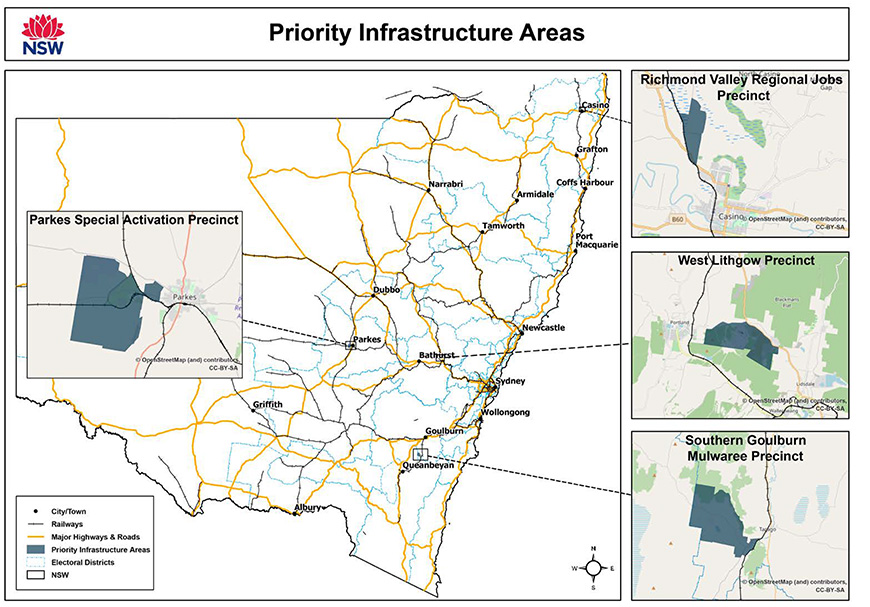
Refocusing energy from waste projects from Sydney to key NSW regions

Energy from waste (EfW) facilities will no longer be permitted in Greater Sydney and most other areas of NSW unless they propose using waste feedstock to replace "less environmentally sound fuels" predominantly to power on-site industrial or manufacturing processes, according to the recently announced NSW Energy from Waste Infrastructure Plan 2041 (EfW Infrastructure Plan).
While the EfW Infrastructure Plan presents new challenges for the EfW facilities currently proposed for Greater Sydney and surrounds, it suggests clearer opportunities for four regional precincts which it highlights as potential sites for EfW facilities.
Refining the Government's EfW policy
Deputy Premier, the Hon. John Barilaro, and Minister for Energy and the Environment, the Hon. Matt Kean, released the EfW Infrastructure Plan last Friday, 10 September 2021. It states that the NSW Government "supports thermal energy recovery as a residual waste management option where it can deliver positive outcomes for the community while protecting human health and the environment." However, it provides much more specific locations for EfW facilities than the Government's Waste and Sustainable Materials Strategy 2041: (Stage 1 – 2021-2027) (Waste Strategy), released in June 2021, and indicates that these new locational limits will be confirmed in changes to planning instruments as early as October 2021.
The NSW Environment Protection Authority (EPA) has concurrently released a Guide to the NSW Energy from Waste framework (EPA Guide) dated September 2021, which provides further guidance on the requirements and regulatory assessment processes for proposed EfW facilities in NSW and the application of the NSW EfW Policy Statement which was updated earlier this year. The EPA Guide provides a tool for stakeholders to understand the assessment requirements and regulatory processes for EfW projects. It highlights the key areas of assessment as being air quality and human health risk assessment, and that some of the challenges for assessment involve managing uncertainty and the residual risk of an immature industry, including the variation in waste streams in different localities and over time.
Priority EfW infrastructure areas
The Waste Strategy states that:
- in order to service the Greater Sydney region, at least one large-scale EfW facility may be needed by 2030 and at least three more large-scale EfW facilities may be needed by 2040 (along with specified other kinds of waste facilities); and
- in order to service the Hunter region, at least one medium-scale EfW facility, or an additional landfill capacity of >300,000 tpa, may be needed by 2040.
It noted that the required infrastructure "may be located outside the region".
Taking this further, the EfW Infrastructure Plan now indicates that, with one exception, the development of EfW projects should be situated away from high density residential areas and will be confined to four regional priority infrastructure areas:
- West Lithgow Precinct;
- Parkes Special Activation Precinct;
- Richmond Valley Regional Jobs Precinct; and
- Southern Goulburn Mulwaree Precinct.
Those precincts are shown in the figure below.
According to the EfW Infrastructure Plan, this is driven by the need to "avoid the exposure of high population centres in NSW to new sources of air emissions".

The four priority infrastructure areas where EfW facilities can be built (Source: NSW Energy From Waste Infrastructure Plan 2041, NSW Environment Protection Authority).
The exception is that EfW facilities may be allowed in other areas in NSW if:
- they use waste, or waste-derived, feedstock to replace "less environmentally sound fuels (including coal or petroleum based fuels) thermally treated (or approved to be thermally treated) at the site"; and
- the energy produced from the waste is "used predominantly to power the industrial and manufacturing processes on-site, rather than exporting that energy to the grid".
Ultimately, all future EfW facilities should:
- support existing waste, net zero and regional growth strategies;
- create jobs;
- be close to current or planned infrastructure;
- avoid high density residential areas;
- connect to existing or planned road/rail infrastructure;
- be compatible with climatic and environmental factors, such as air quality;
- support sustainable and secure access to energy in location that need it; and
- attract economic and investment opportunities to communities who need it.
In addition, all EfW proposals, no matter where they are located, must still comply with current planning and environmental legislation and policies for which a framework is provided in the EPA Guide.
Longer term planning
According to the EfW Infrastructure Plan, the NSW Government will consider the need for further EfW capacity by 2025, and again by 2030 (in line with the Waste Strategy targets). Additional EfW priority infrastructure areas will be considered, if required, as long as they meet the principles of the EfW Infrastructure Plan.
From policy to law
The EfW Infrastructure Plan indicates the NSW Government's intention to imbed the new policy into environmental planning instruments and legislation. Specifically, it states that "actions" to implement the plan will include:
- "changes to planning instruments" in October 2021; and
- "amendments to various environmental and planning legislation … to hardwire the strategic planning needs and improve the consistency of laws that apply to energy from waste", in late 2021-early 2022.
These steps should crystallise the potential opportunities for industry and approval limitations for consent authorities determining development applications of new EfW proposals. In the meantime, the EfW Infrastructure Plan provides further detail on the NSW Government's strategic policies for managing residual waste and the EPA Guide further guidance on the application of the EfW Policy Statement.
